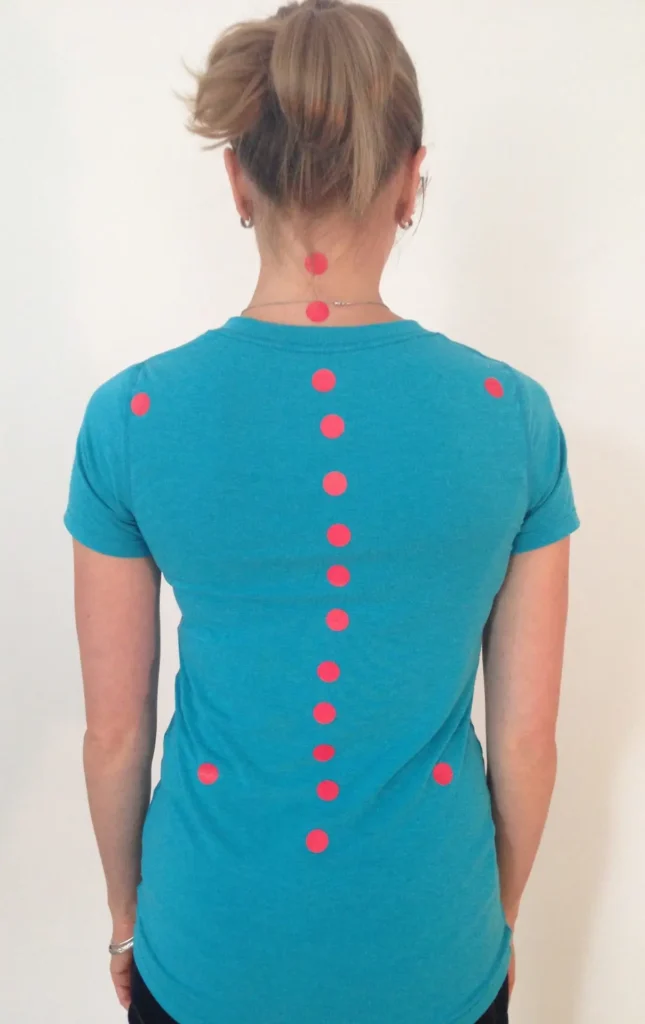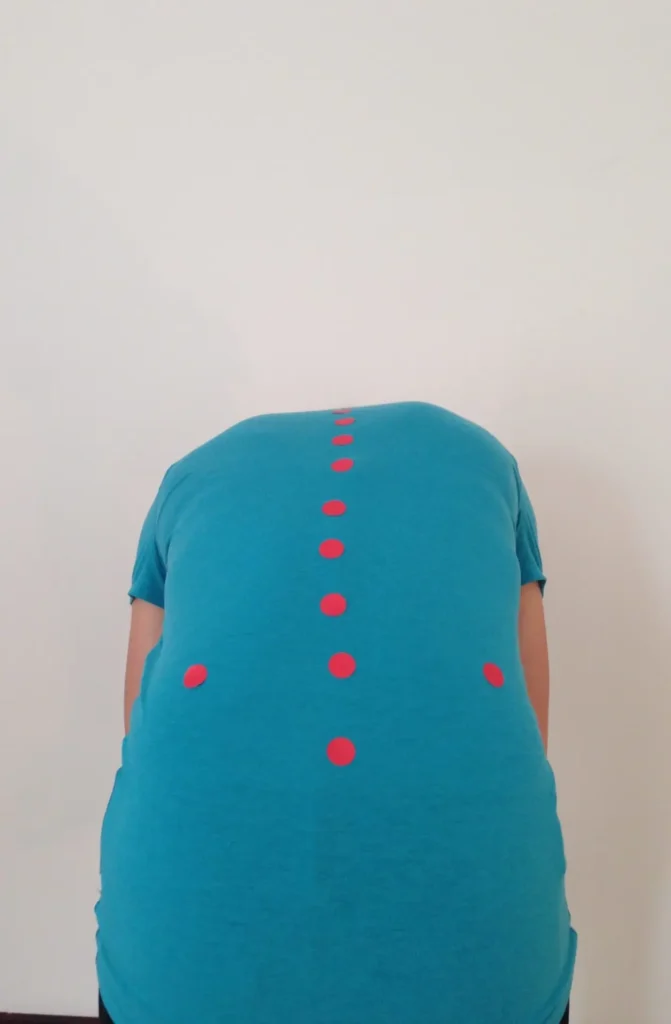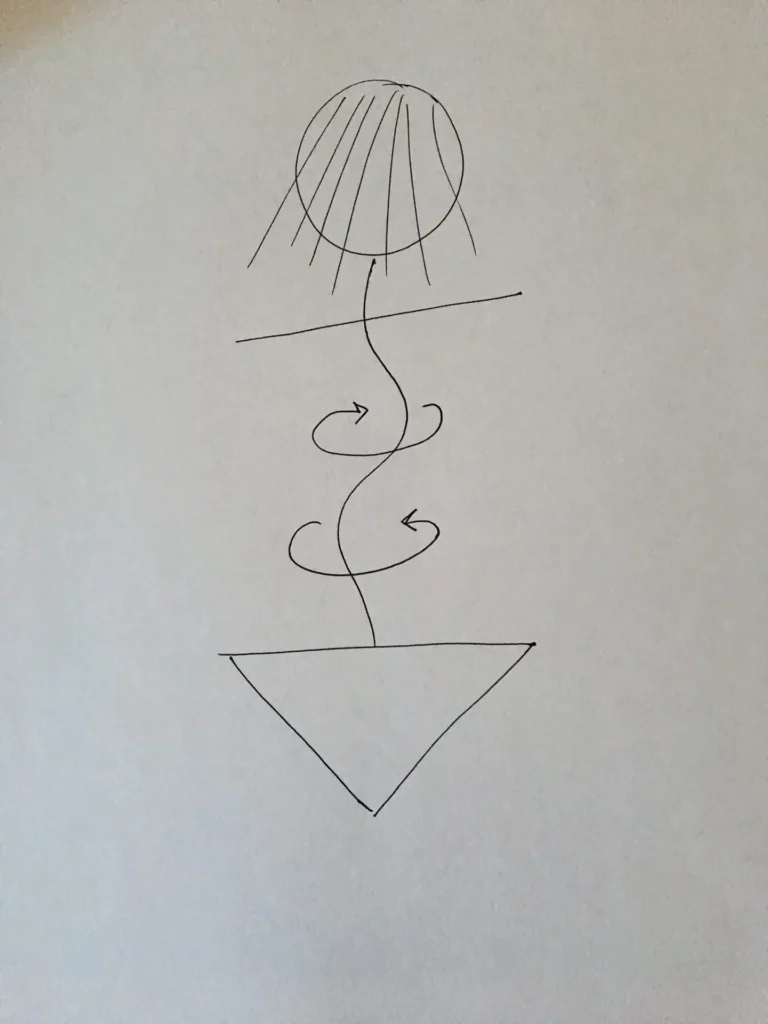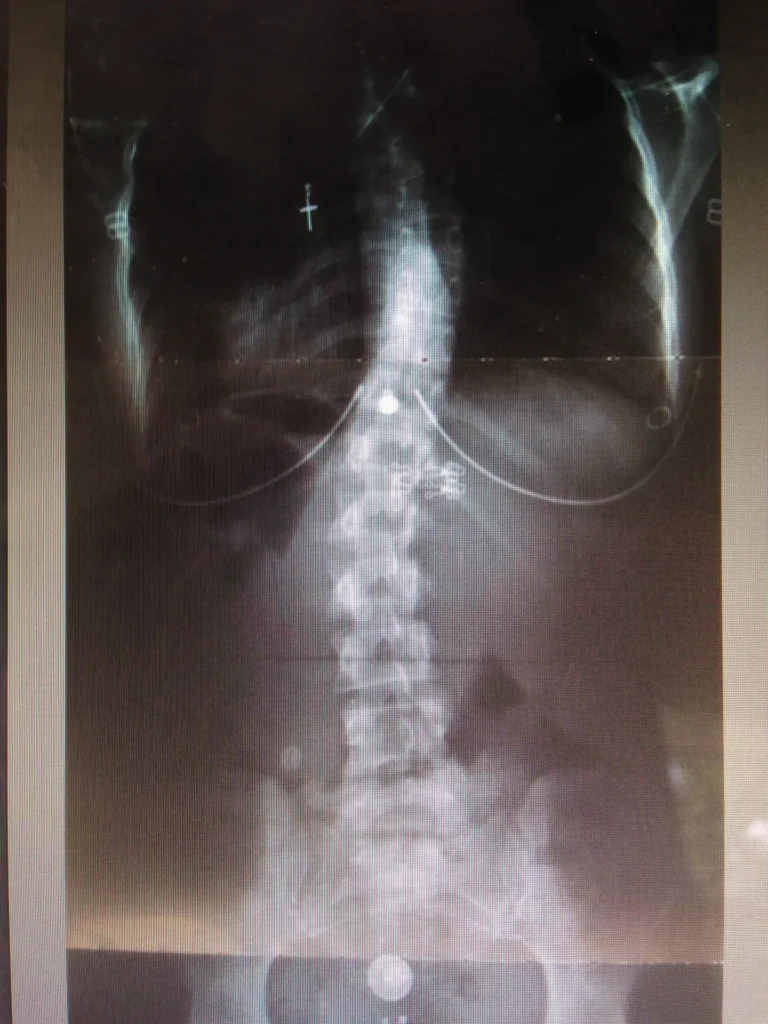This blog is part of the Analyzing Scoliosis series, which is designed to teach movement practitioners how to work confidently with clients who have scoliosis. To start at the first post in the series, go here. My book, Analyzing Scoliosis, which covers the topics in this series in more depth (as well as others), is available on Amazon.
It’s finally time to create a diagram sketch for scoliosis! This is one of the most useful pieces of information I have on each of my scoli clients, and I refer to it frequently. When I work with different scoliotic clients in back-to-back lessons and don’t look at their diagram sketches, my mind can easily turn into a jumbled mess because every scoliotic body is so different. My clients’ different scoli curves start to meld together in my mind, and it’s immensely helpful for me to have it on paper to refer to. This step will be invaluable to you as a Pilates instructor, too. My hope is that as you put what you’ve seen in your client on paper you’ll start to truly make sense of it all.
To make a diagram sketch of your client’s scoliosis, you’re going to need your client’s dot sticker pictures, a blank piece of paper, and a pen or pencil. (Just a note: Once you’ve mastered how to do a physical and a visual assessment, you can make a diagram sketch directly from your notes and skip the dot sticker picture.)
This is not art class, and you don’t have to be an artist—but you do want to make sure you can look back at your drawing later and interpret it. Let’s get started!
- HEAD Draw a circle for the head and some straight lines for hair, so you know it’s the back of your client’s body.
- SPINE Now look at the dot sticker picture of your client standing upright. Simply draw a line down from the head for the spine, curving it where you see the dot stickers curve.
- SHOULDERS Draw a straight line from side-to-side for the shoulders, taking care to draw the line on an angle if your client’s shoulder blade dots show that the shoulders are not level.
- HIPS Go down to the hips, and draw another straight line side-to-side from the two illium dot stickers—again, draw the line on an angle if your client’s hips are not level in your photo.
- PELVIS Now, draw a triangle downward to represent the pelvis. If your client’s pelvis is at an angle, your triangle should be drawn at an angle, too. Your drawing doesn’t have to be perfect, but keep in mind that you’re attempting to get an accurate image of what their scoli looks like.
- ROTATION Refer to the second dot sticker picture of your client rolling halfway down; it shows if their scoliosis encompasses rotation. If one side of the rib cage is higher than the other, draw a circling arrow around the part of the body where the rotation happens. This signifies that the vertebrae are twisting in a certain direction. There may be more than one rotation, so if that is the case, make sure to draw all the rotations that you see.
Confused? Don’t worry! Let’s look at an example to help you get an idea of what a diagram sketch will look like. My dot sticker pictures and subsequent diagram sketch is below. If you reference the photos of my back, you can see that my idiopathic scoli has the stereotypical “S” curve with rotation.



My dot sticker pictures show that I have an upper right curve and a lower left curve. On my shoulders, my right dot sticker is higher than my left, so I drew a straight line on an angle showing that my right shoulder is higher. The dot stickers on my hips are even, so that straight line is not on an angle.
My second dot sticker photo shows that I have rotation in my ribcage. On my diagram sketch, I drew a big circle in my rib cage/around my thoracic spine. The circle goes clockwise to signify that the upper right, back ribs are further back in space and my front left ribs are further forward in space. I have an additional rotation in the opposite direction in my compensatory lumbar curve, so I drew a circular line that goes counter-clockwise on my lumbar spine.
This image is an x-ray taken of my back a handful of years ago.

For comparison, you can see that my dot sticker pictures, diagram sketch, and x-ray are all quite similar. They all show an upper right and lower left curve as well as the right shoulder being higher and the pelvis being level.
On the x-ray, notice the placement of the spinous process on each vertebra. In the concave portions of the scoli curves, the spinous processes rotate toward the concave side—they rotate into the curves. If you have an x-ray of your client’s spine, looking at the spinous processes is another way to confirm the rotation that your Scoliometer will pick up, and will guide you as to which way to place your rotational circle in your diagram sketch.
By no means does going through this process take the place of an x-ray, but it gives you the same overall picture of what the body is doing. Many scoli clients will come without x-rays, but you now can create an image that gives you enough information to safely and effectively move their bodies—curves, rotations, misalignments, and all.
Next time, I’ll cover how to pad a client’s scoliosis based on their diagram sketch. This technique helps place the spine in a more neutral position and is essential to helping them untwist their scoli.